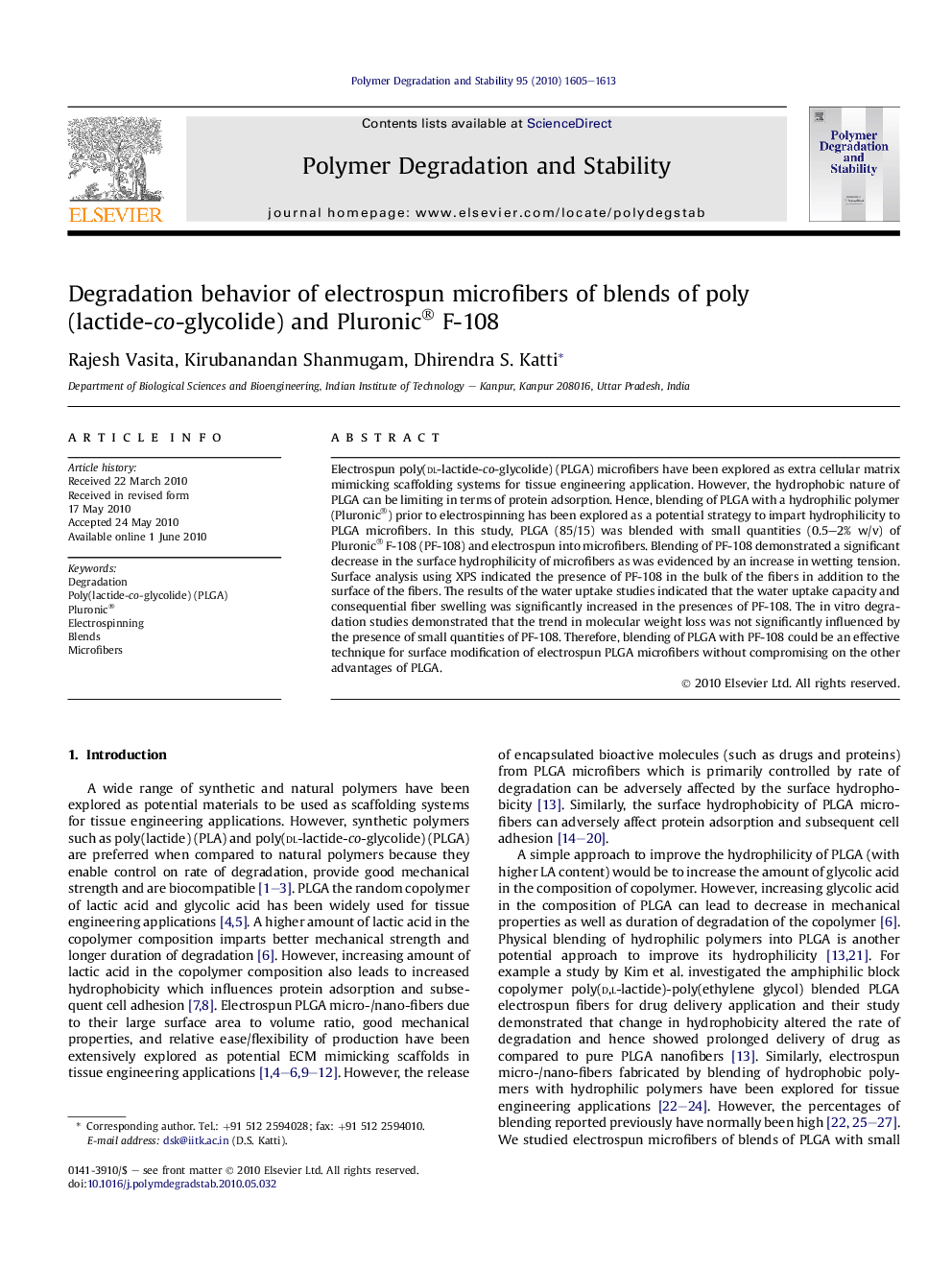| Article ID | Journal | Published Year | Pages | File Type |
|---|---|---|---|---|
| 5203660 | Polymer Degradation and Stability | 2010 | 9 Pages |
Abstract
Electrospun poly(dl-lactide-co-glycolide) (PLGA) microfibers have been explored as extra cellular matrix mimicking scaffolding systems for tissue engineering application. However, the hydrophobic nature of PLGA can be limiting in terms of protein adsorption. Hence, blending of PLGA with a hydrophilic polymer (Pluronic®) prior to electrospinning has been explored as a potential strategy to impart hydrophilicity to PLGA microfibers. In this study, PLGA (85/15) was blended with small quantities (0.5-2% w/v) of Pluronic® F-108 (PF-108) and electrospun into microfibers. Blending of PF-108 demonstrated a significant decrease in the surface hydrophilicity of microfibers as was evidenced by an increase in wetting tension. Surface analysis using XPS indicated the presence of PF-108 in the bulk of the fibers in addition to the surface of the fibers. The results of the water uptake studies indicated that the water uptake capacity and consequential fiber swelling was significantly increased in the presences of PF-108. The in vitro degradation studies demonstrated that the trend in molecular weight loss was not significantly influenced by the presence of small quantities of PF-108. Therefore, blending of PLGA with PF-108 could be an effective technique for surface modification of electrospun PLGA microfibers without compromising on the other advantages of PLGA.
Related Topics
Physical Sciences and Engineering
Chemistry
Organic Chemistry
Authors
Rajesh Vasita, Kirubanandan Shanmugam, Dhirendra S. Katti,
